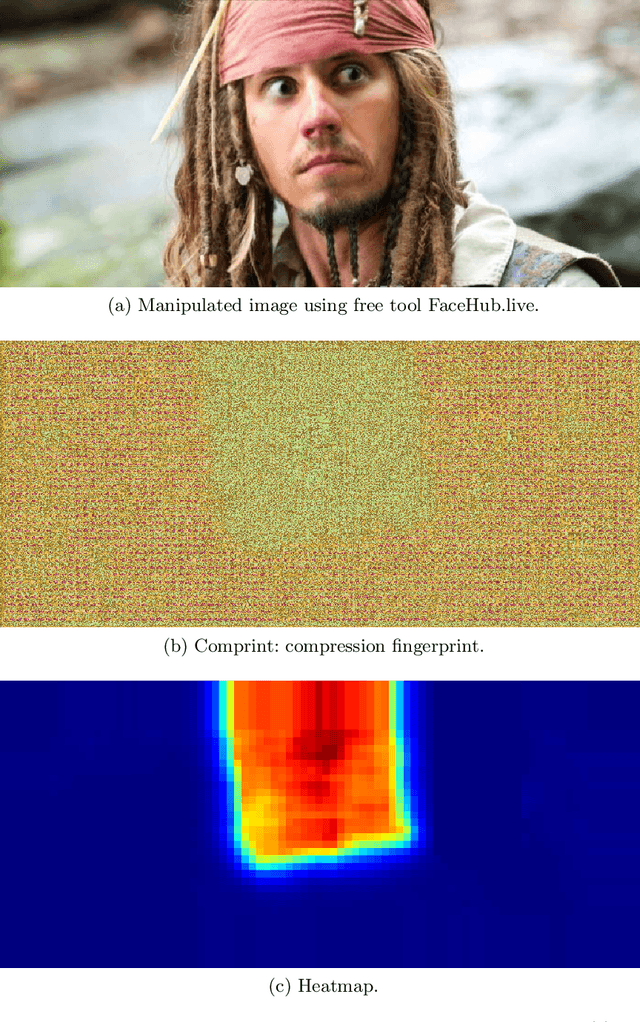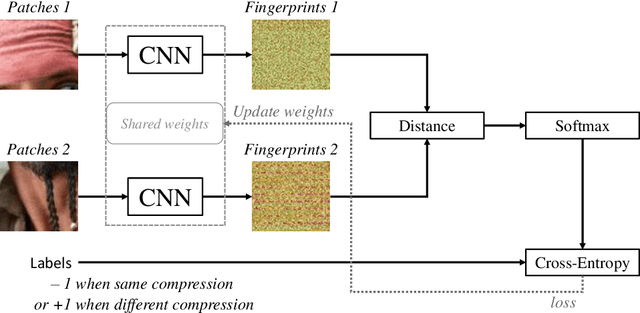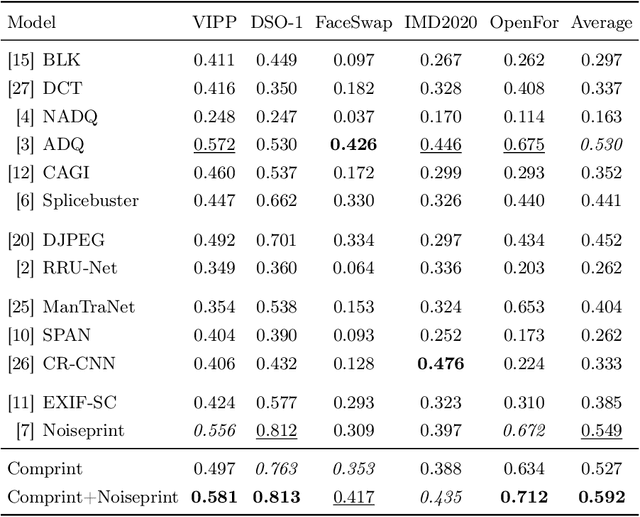Peter Lambert
TGIF: Text-Guided Inpainting Forgery Dataset
Jul 16, 2024


Abstract:Digital image manipulation has become increasingly accessible and realistic with the advent of generative AI technologies. Recent developments allow for text-guided inpainting, making sophisticated image edits possible with minimal effort. This poses new challenges for digital media forensics. For example, diffusion model-based approaches could either splice the inpainted region into the original image, or regenerate the entire image. In the latter case, traditional image forgery localization (IFL) methods typically fail. This paper introduces the Text-Guided Inpainting Forgery (TGIF) dataset, a comprehensive collection of images designed to support the training and evaluation of image forgery localization and synthetic image detection (SID) methods. The TGIF dataset includes approximately 80k forged images, originating from popular open-source and commercial methods; SD2, SDXL, and Adobe Firefly. Using this data, we benchmark several state-of-the-art IFL and SID methods. Whereas traditional IFL methods can detect spliced images, they fail to detect regenerated inpainted images. Moreover, traditional SID may detect the regenerated inpainted images to be fake, but cannot localize the inpainted area. Finally, both types of methods fail when exposed to stronger compression, while they are less robust to modern compression algorithms, such as WEBP. As such, this work demonstrates the inefficiency of state-of-the-art detectors on local manipulations performed by modern generative approaches, and aspires to help with the development of more capable IFL and SID methods. The dataset can be downloaded at https://github.com/IDLabMedia/tgif-dataset.
Blind Deep-Learning-Based Image Watermarking Robust Against Geometric Transformations
Feb 14, 2024Abstract:Digital watermarking enables protection against copyright infringement of images. Although existing methods embed watermarks imperceptibly and demonstrate robustness against attacks, they typically lack resilience against geometric transformations. Therefore, this paper proposes a new watermarking method that is robust against geometric attacks. The proposed method is based on the existing HiDDeN architecture that uses deep learning for watermark encoding and decoding. We add new noise layers to this architecture, namely for a differentiable JPEG estimation, rotation, rescaling, translation, shearing and mirroring. We demonstrate that our method outperforms the state of the art when it comes to geometric robustness. In conclusion, the proposed method can be used to protect images when viewed on consumers' devices.
Training Data Improvement for Image Forgery Detection using Comprint
Nov 25, 2022Abstract:Manipulated images are a threat to consumers worldwide, when they are used to spread disinformation. Therefore, Comprint enables forgery detection by utilizing JPEG-compression fingerprints. This paper evaluates the impact of the training set on Comprint's performance. Most interestingly, we found that including images compressed with low quality factors during training does not have a significant effect on the accuracy, whereas incorporating recompression boosts the robustness. As such, consumers can use Comprint on their smartphones to verify the authenticity of images.
Comprint: Image Forgery Detection and Localization using Compression Fingerprints
Oct 05, 2022



Abstract:Manipulation tools that realistically edit images are widely available, making it easy for anyone to create and spread misinformation. In an attempt to fight fake news, forgery detection and localization methods were designed. However, existing methods struggle to accurately reveal manipulations found in images on the internet, i.e., in the wild. That is because the type of forgery is typically unknown, in addition to the tampering traces being damaged by recompression. This paper presents Comprint, a novel forgery detection and localization method based on the compression fingerprint or comprint. It is trained on pristine data only, providing generalization to detect different types of manipulation. Additionally, we propose a fusion of Comprint with the state-of-the-art Noiseprint, which utilizes a complementary camera model fingerprint. We carry out an extensive experimental analysis and demonstrate that Comprint has a high level of accuracy on five evaluation datasets that represent a wide range of manipulation types, mimicking in-the-wild circumstances. Most notably, the proposed fusion significantly outperforms state-of-the-art reference methods. As such, Comprint and the fusion Comprint+Noiseprint represent a promising forensics tool to analyze in-the-wild tampered images.
 Add to Chrome
Add to Chrome Add to Firefox
Add to Firefox Add to Edge
Add to Edge